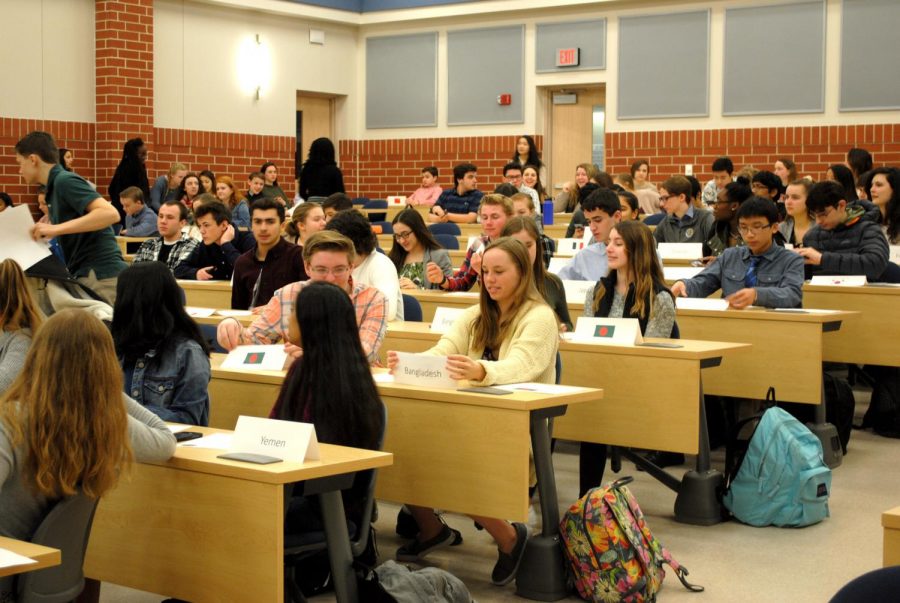Model UN Conference takes on India-Pakistan crisis
June 20, 2019
Both India and Pakistan are immensely strong nations with an abundance of nuclear weapons, military power, and overall economic prosperity.
Thus, it is no surprise that when these two countries engage in conflict, it is not only a threat to those directly involved but also to the whole world.
A suicide bombing killed 44 Indian policeman on February 14. The violence was conducted by a Pakistan-based Islamist militant group in Pulwama, a city along the border of India and Pakistan, and aroused anger and fury amongst many Indians.
On February 26, India reported a strike that involved 12 fighter jets dropping 1000 kilograms of bombs on the Islamic terrorist base in Pakistan and flying over Kashmir.
A day later, Pakistan shot down two Indian aircrafts and captured an Indian pilot. Pakistan eventually released the pilot but animosity between the two nations still persists.
In the midst of these events, Spring-Ford was hosting its very own AP Human Geography Model United Nations conference, and in the spirit of engaging in world politics, the organizers included this situation in their agenda.
In the conference, each student represented a specific country and delegation and negotiated with fellow delegates to solve national issues.
Midway through the conference, the India-Pakistan crisis was introduced for the students to incorporate this additional issue into their deliberations.
The conflict has a long history.
The two countries have harbored a contentious political and social relationship since their split in the late 1940s. After India gained independence from the British crown in 1947, a bloody feud ensued, largely between Hindus and Muslims. It was negotiated that the best way to end this bloodshed was to partition the country into present day India, who’s population would be a majority of Hindus, and Pakistan, which would contain mostly Muslims.
During this split, however, it is estimated that 2 million people lost their lives, and another 14 million were displaced (forced to move from their homes to immigrate to either India or Pakistan).
Since then, tensions between the two neighboring countries have persisted, especially with regards to the control of Kashmir, a state in northern India along the Himalayan mountains. Most recently however, the conflict has further intensified as seen through February’s incidents.
As such, careful thought was needed when solutions were presented during the AP Human Geography event.
Many resolutions that had been crafted earlier in the day needed to be revamped and updated to adhere to this added crisis. By the end of the day, each country had a resolution to diplomatically resolve this issue, so we can only hope that in the real world, these country’s leaders can do the same.

